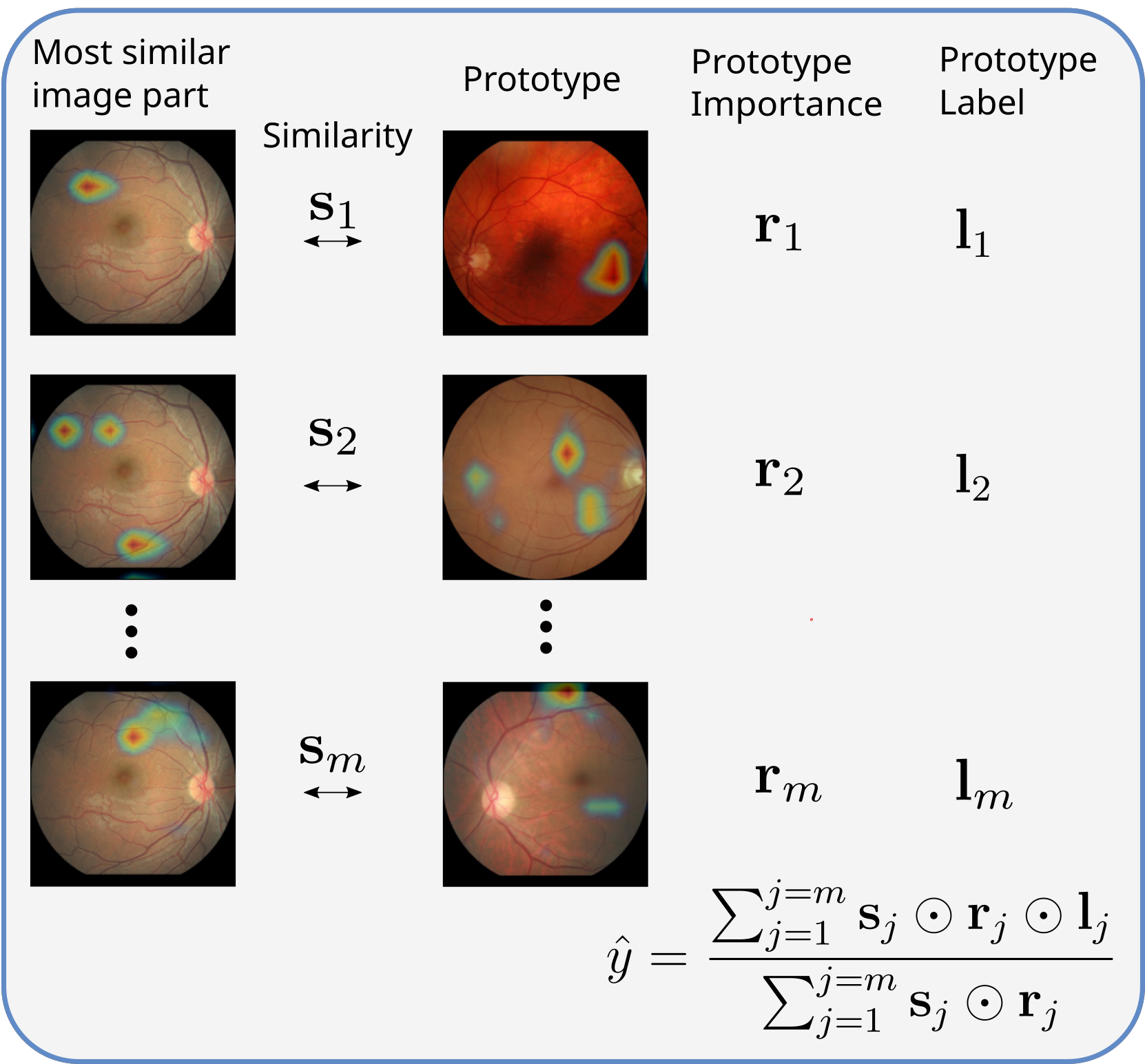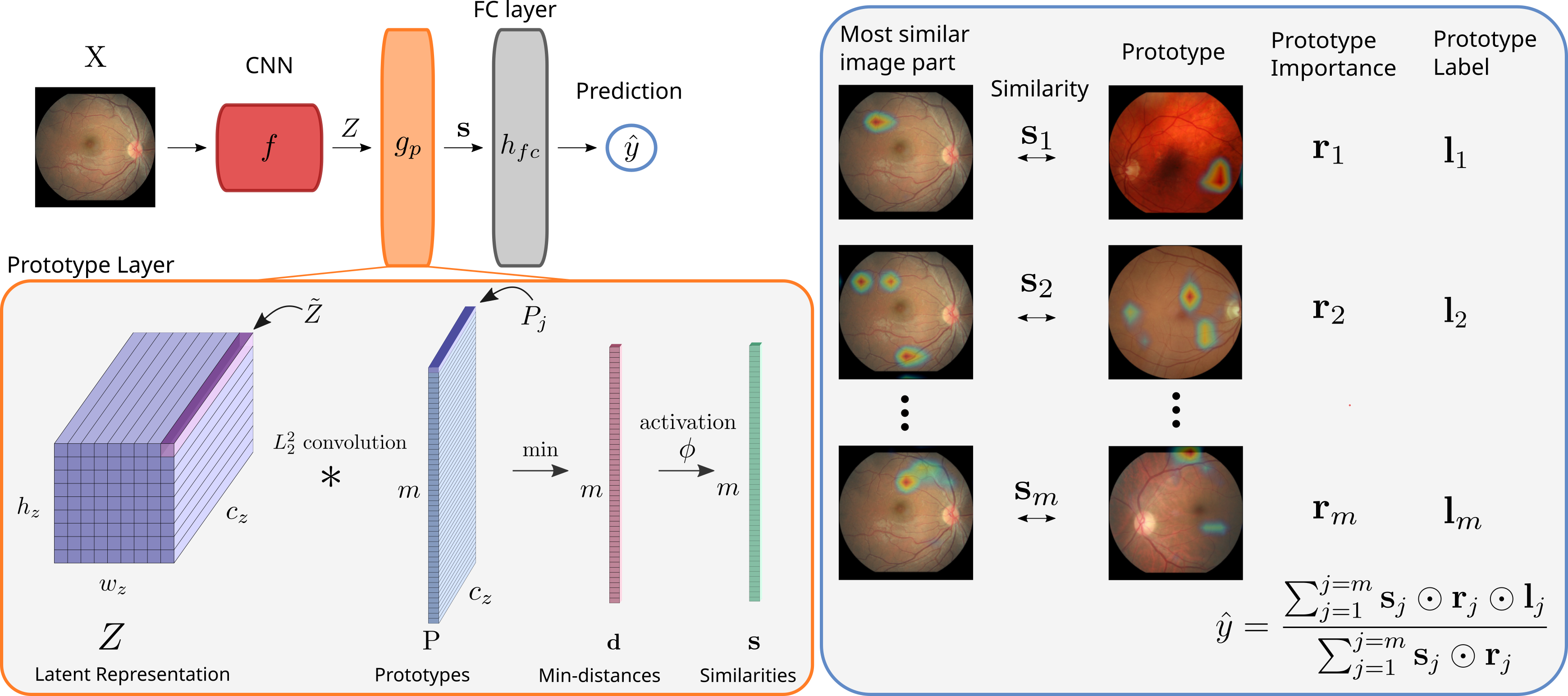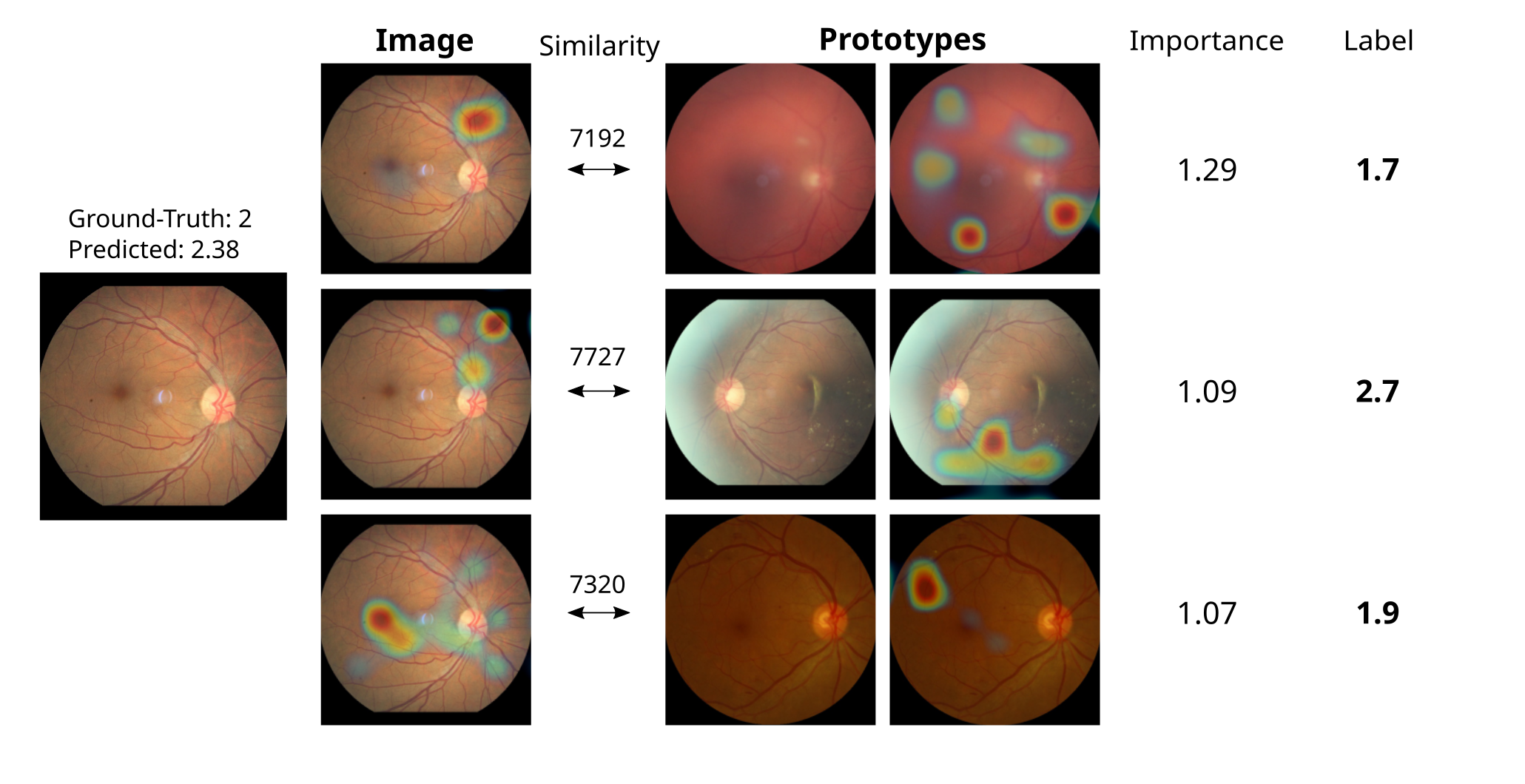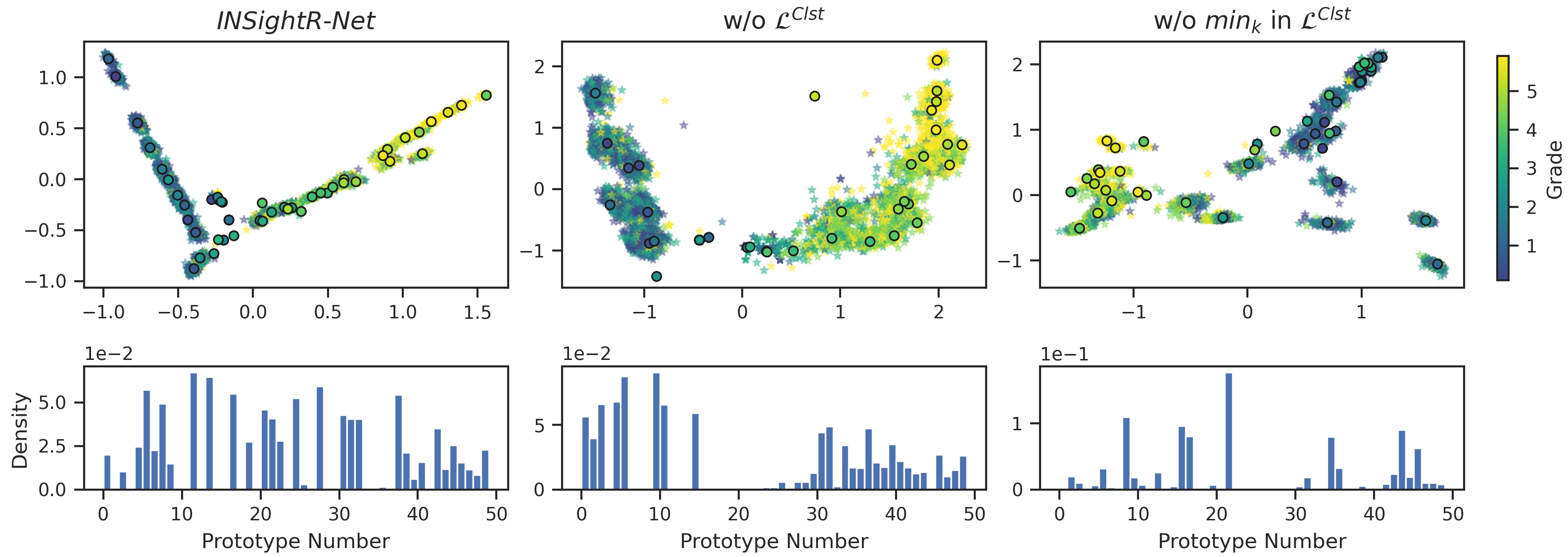
|
|
|
|
|
|
|
|
|
|
|
|
|

|
|
Convolutional neural networks (CNNs) have shown exceptional performance for a range of medical imaging tasks. However, conventional CNNs are not able to explain their reasoning process, therefore limiting their adoption in clinical practice. In this work, we propose an inherently interpretable CNN for regression using similarity-based comparisons (INSightR-Net) and demonstrate our methods on the task of diabetic retinopathy grading. A prototype layer incorporated into the architecture enables visualization of the areas in the image that are most similar to learned prototypes. The final prediction is then intuitively modeled as a mean of prototype labels, weighted by the similarities. We achieved competitive prediction performance with our INSightR-Net compared to a ResNet baseline, showing that it is not necessary to compromise performance for interpretability. Furthermore, we quantified the quality of our explanations using sparsity and diversity, two concepts considered important for a good explanation, and demonstrated the effect of several parameters on the latent space embeddings. |
|
We included a prototypical layer in our network architecture that computes the similarities of an image latent representation to a set of learned prototypes. All prototypes are assigned a label at the start of training, in the same range as the dataset labels. The prediction of our model for a new image is then made using these similarities, and is formulated as a weighted mean of prototype labels, with the weights consisting of the similarities (s) and a prototype improtance score (r). |

|
|
The prediction for an image as a weighted mean of prototype labels provides an intuitive explanation of the models' reasoning process. |

|
|
INSightR-Net maintains baseline prediction performance, indicating it is not necessary to sacrifice performance for interpretability. Our method also obtains a lower sparsity while maintaining model diversity by replacing the Log-Similarity activation by a new function. |

|
|
The latent representations clearly show the effect of the applied cluster loss and the replacement of the minimum by the k-minimum. The cluster loss enforces the latent patches to be clustered around prototypes, thus encouraging each prototype to display a representative concept. |

AcknowledgementsThis template was originally made by Phillip Isola and Richard Zhang for a colorful ECCV project; the code can be found here. |